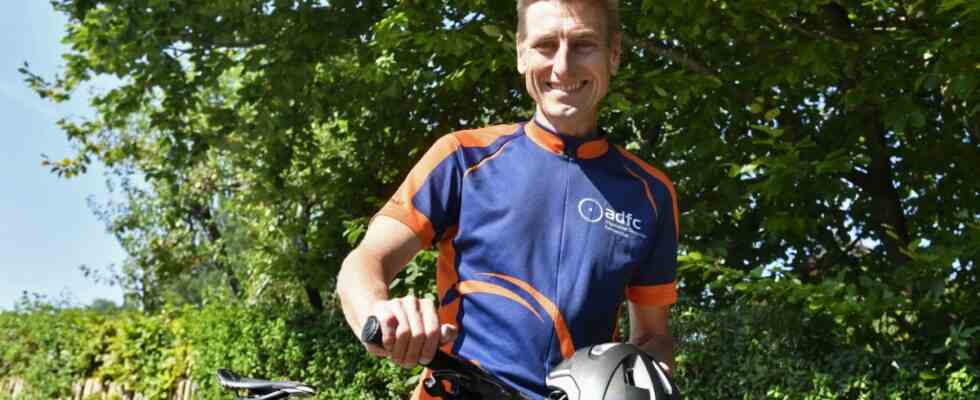When it comes to cycling, hardly anyone knows it better than Anton Maier from Feldafing – and that from his own experience. The vocational school teacher and Starnberg Green district councilor rides his bike almost 40 kilometers to work in Schwabing several times a week. And even as a local politician, he is always committed to this alternative to the car.
SZ: How often do you ride your bike?
Anton Maier: Three days a week because the timetable allows it. If I start very early or have a long day, then I take the S-Bahn.
Why not the car?
We don’t have parking. There are 17 places with 80 colleagues.
That’s one reason. If cycling were more attractive, maybe even more people would switch. That’s why it’s an express way. At the moment, however, it looks as if nothing will come of it in the Starnberg district because the route is encountering resistance in the municipalities. What went wrong?
In Krailling, they create a fearful backdrop, as if it were a racetrack for racing cyclists, like a motorway that you can’t cross. Apparently they overlooked the fact that the speed should be 20 kilometers per hour. That is compatible with a town center. That would even be ideal, because bike rides should be bundled there and not the car parking spaces. Those who do the shopping or eat an ice cream or whatever should come there by bike. But it was foreseeable that the Kraillingers would reject it. They had suggested alternative routes, but the planning office didn’t respond to that. It was clear that the town center has a high priority for the municipality of Krailling. In Gauting, there are probably parking spaces on the slope road that would be eliminated.
And now both the Kraillinger and the Gautinger believe that the route chosen by experts as the best variant is not feasible.
They might have had the wrong idea, like the Nordbahn in Wuppertal on a former railway line. There was no parking space on it before, there is no shop on the way, it does not go through the town center. The big disadvantage is that you always have to get off this train if you want to go to the place. Actually, this is something for through traffic. But we don’t need this kind of cycle expressway, but a route that you can use for a part of the way to school or for shopping or if you want to get to work in Pasing, for example. You can enjoy an obstacle-free journey, you don’t have to stop at the traffic light, pay attention to the right in front of the left or drive past parked cars. With obstacles like that, you just drive faster by car.
The route would have been correct?
The planners had to take a lot into account: the commuters, the everyday journeys, the students. The Martinsried campus with many young people who are keen on cycling is very important. Of course, this is a route that also goes through residential areas. Above all, the function was sold poorly.
Do you really need such a cycle path, would it be accepted? Or is that over-ambitious dream dancing?
The path is supposed to motivate people to change. So it has to be more comfortable and safer than what we offer now. Many cyclists are already riding along the Margaretenstraße in Krailling along the Würm or past the school in Stockdorf in the direction of Pasing. In order to make it more attractive, I have to give cyclists the right of way or sometimes convert an intersection in such a way that it becomes less convenient for other traffic.
Quite an expensive proposition given the estimates in the study. There is talk of a total cost of 19 million euros. The effort considerable. Lane widths of up to four meters. Does everything always have to be 150 percent in Germany? Wouldn’t it also be a size smaller?
I wouldn’t question the width. You could see that last year, when the weather was nice for a trip, on an actually well-developed cycle path on the old Olympic road. Three meters is not enough for cycling in both directions. And in a town center that doesn’t get along if some people want to shop and others drive by. You have to design it accordingly. We need safe crossings even without a cycle expressway.
Now nobody seems to want that. Has the project died with it – or can it somehow still be saved?
That depends very much on the topic of funding. If it’s like what the district administrator says, that funding is gone if you deviate from the plan, I’m afraid it’s dead. As a big hit to rebuild all the obstacles on the track in a reasonable period of time, we can’t do it without this master plan. Perhaps one or the other spot can be repaired, but not in the generous way. At most, a few undisputed sections could be improved for everyday traffic. It would be very important to upgrade the Mühltal-Königswiesen railway to make it suitable for everyday use, because this would allow the Mühltal to be crossed safely.

